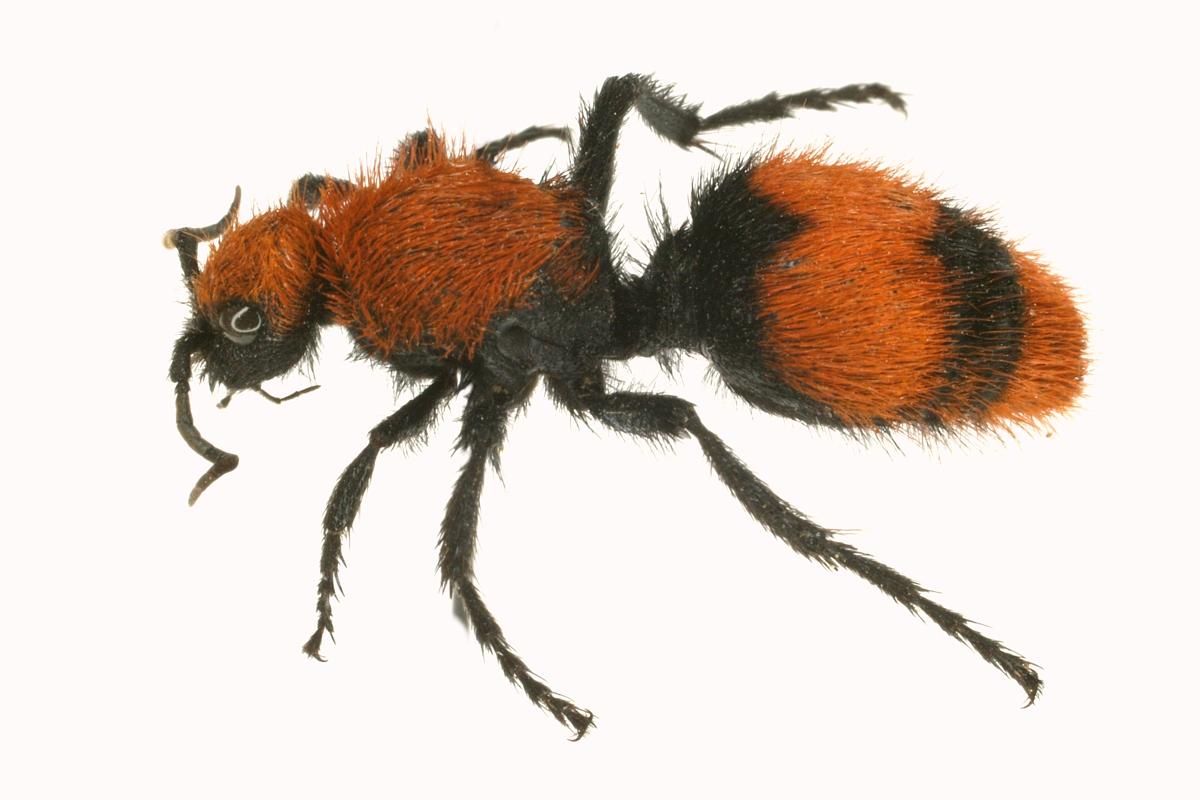
By Kait Chapman, Extension Educator in Lancaster County
Velvet ants are some of the most unique and striking insects in Nebraska. While they are commonly called velvet ants, they’re actually not ants at all — they’re wasps in the family Mutillidae, and they have a neat lifecycle to go with their clever disguises.
Female velvet ants are often mistaken for actual ants because they’re wingless. While the males do possess wings and look more like a stereotypical wasp, the female needs to crawl in order to access areas to lay her eggs. This is where their life cycle gets interesting because, like many wasps, velvet ants are parasitoids that lay their eggs on other insects. In this case, it’s a wasp parasitizing another wasp. Female velvet ants will search out the underground nests of large wasp species to find larvae to feed her young. This is why landscapes that are home to cicada killer wasp nests are often also home to velvet ants.
Their bright coloration of red and orange also has a purpose. While male wasps lack a stinger and are harmless, the female wasps can deliver an exceptionally painful sting. And while the sting is so painful that they’ve also been incorrectly labeled “cow killers,” they don’t really kill cows (or people), and they’re not aggressive in nature. Stings most often occur when someone attempts to handle the insect or accidentally steps on one. This is where their bright color comes in handy — it’s a convenient warning to keep a safe distance.
Because the risk of a sting is low, and they don’t cause any harm to the home or landscape, no control measures are recommended. Instead, we can be inspired by the velvet ant’s beautiful coloration.